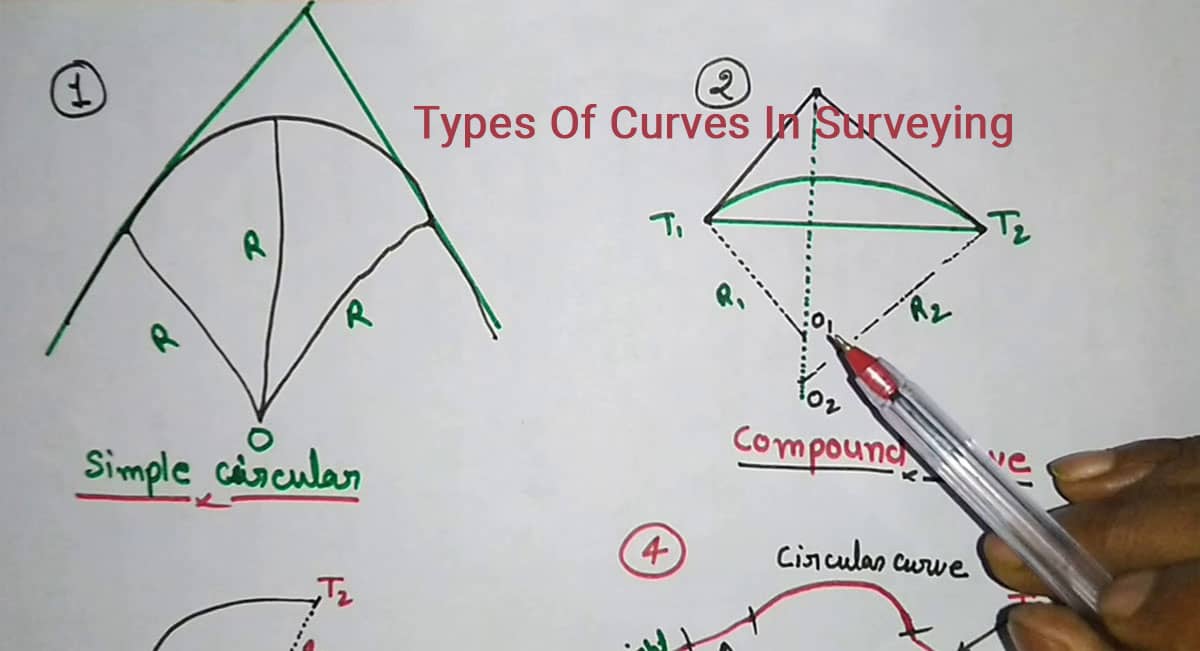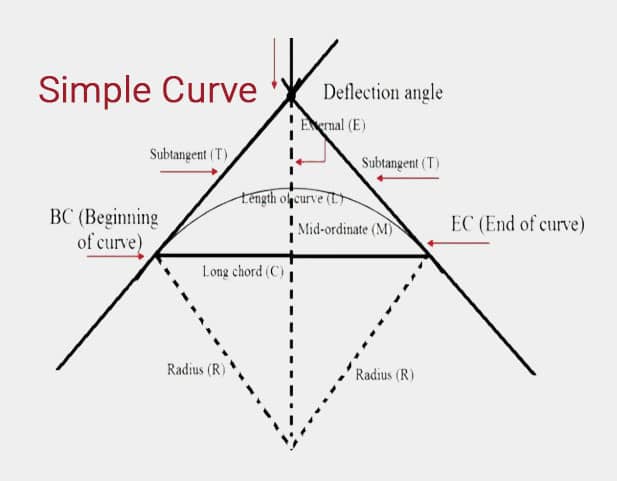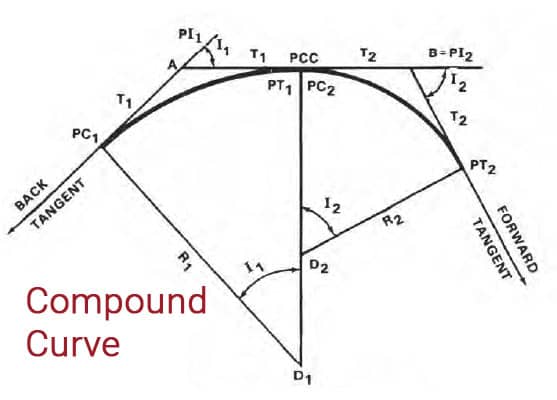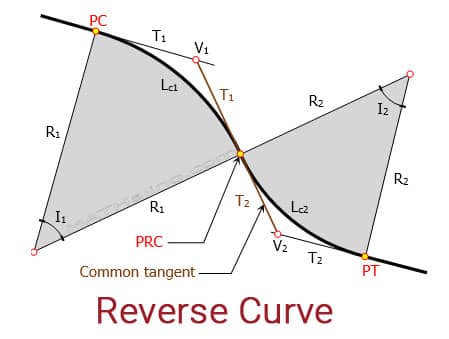Types Of Curves In Surveying

What Is Curve
Curves are generally the horizontal and/or vertical bends that are usually used on highways and railways when it is necessary to change the alignment of the route. when two points are located at di?erent levels, it becomes necessary to give a curve.
This curve usually helps to connect the points lying at di?erent levels in such a way that the vehicles moving on that route could move with ease, safety, and comfort. A proper alignment or a curve can provide smoother movement of vehicles from one point to another, located at di?erent levels.
A curve is introduced at the intersection of two straights to e?ect a gradual change in the direction. This change in direction may be in a horizontal plane or a vertical plane. So the curve is provided to the route according to its direction, i.e. either in a vertical plane or in a horizontal plane, respectively.
Types Of Curves In Surveying
Curves in surveying are classified into two main types. They are as follows:-
Horizontal curves
A horizontal curve is provided where two straight lines intersect with each other in a horizontal plane. When a curve is given in a horizontal plane, it is known as a horizontal curve. The horizontal curves are further divided as follows:
Simple curve
A simple curve is a single arc of a circle, which is tangential to both the straight lines of the route. There are a few elements of a simple circular curve discussed below.

Compound curve
A compound curve comprises two or more circular arcs of di?erent radii with their centers of curvature on the same side of the common tangent. It is where the cutting and filling of soil is to be avoided. Compound curves are necessary whenever the space restrictions rule out a signal circular curve and when there are property boundaries.

Reverse curve
A curve consisting of two circular arcs of similar or di?erent sizes radii having their centres on opposite sides of the common tangent at the point of reverse curvature is known as a reverse curves reverse curve is also known as a serpentine curve or S-curve due to its shape. Reverse curves are used to connect two parallel roads or railway lines. It is generally used when two lines intersect at a very small angle.

Transition curve
It is a curve of varying radius. The value of the radius of this type of curve varies from infinity to a certain fixed value. It provides a gradual change from the straight line to the circular curve and again from the circular curve to a straight line. It is usually provided on both ends of a circular curve. The transition curves are provided on roads and railways to lessen the discomfort at the sudden change in curvature at the junction of a straight line and a curve.
Combined curve
The combination of a simple circular curve and a transition curve, is known as a combined curve. Combined curves are mostly preferred in highways and railways.
When transition curves are provided at both ends of a circular curve, the curve formed is known as a combined or a complete curve.
Vertical curves
Vertical curves are usually provided when a highway or a railway crosses a ridge or a valley. Vertical curves are provided when there is a di?erence of level between two points. So to make the movement easy between these points, a vertical curve is provided. It makes the transition of the vehicle smooth and comfortable.
Summit Curve
A vertical curve having its convexity in the upwards direction is known as a summit curve.
Sag Curve Or Valley Curve
A vertical curve having its convexity in the downwards direction or when it is concave upwards is known as a valley curve. It is also known as sag curve.
Please watch the Short video for Types Of Curves In Surveying
